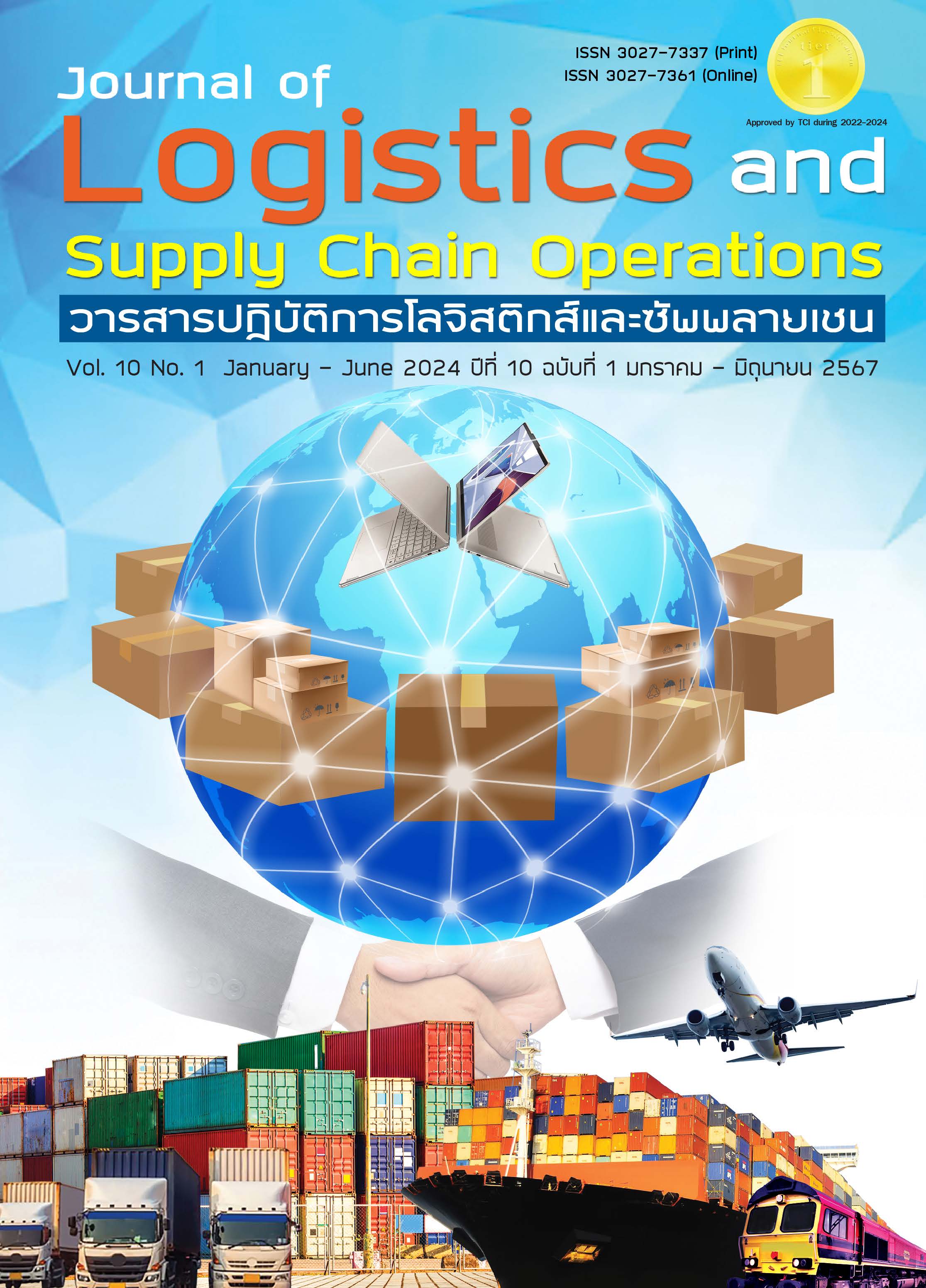Guideline for Process Improvement of Empty Container Evacuation from Laem Chabang Terminal to Lat Krabang Inland Container Depot
DOI:
https://doi.org/10.53848/jlscc.v10i1.264288Keywords:
Road transportation, Rail transportation, Container, Laem Chabang terminal, Lat Krabang inland container depotAbstract
This research aimed to 1) study current empty container evacuation process and 2) study the improvement process for empty container evacuation from Laem Chabang terminal to Lat Krabang inland container depot effectively. The research used qualitative and quantitative research. The data was collected through in-depth interview with 12 representatives who were involved the evacuation process. 6 people from the shipping agent, 3 people from terminal operator, and 3 people from truck provider. The statistical data collected on empty container import volume during 2021 - 2022. The cause-and-effect data was analyzed by using a fishbone diagram analysis technique. The results of this research showed that 1) current empty evacuation process from Laem Chabang terminal to the Lat Krabang Inland container depot can be transported by road and rail transport. 2) Problems and solutions for process improvement can be summarized consisted of three major aspects: (1) transportation process; (2) terminal operating process; and (3) customs process. Solutions to improve the process include setting up a transport appointment system for effective management. Transport planning from road to rail effectively and change communication channels to be online instead of offline to reduce unnecessary traveling.
References
การรถไฟแห่งประเทศไทย. (2564). กลุ่มสินค้าคอนเทนเนอร์. ค้นเมื่อ 26 เมษายน 2565, จาก: https://www.railway.co.th/Service/Products_detail?value1=00DE5502B5AA7B42A92BE9FF953D8EBD0100000031F0DEAE4ACE29A81
CFD8E7399F19B9858EC1219B0653C708A7026DBB33D20F6&value2=00DE5502B
AA7B42A92BE9FF953D8EBD010000003D122C3E9E137C249558532EFD7DCCA18
EA0BFA314875216DF3C6D5585B63.
ชัยยุทธ คำคุณ. (2560). แนวทางการพัฒนากระบวนการทางศุลกากรเพื่อเสริมสร้างขีดความสามารถทางการแข่งขันของประเทศ. การค้นคว้าอิสระหลักสูตรการป้องกันราชอาณาจักร, วิทยาลัยป้องกันราชอาณาจักร.
นฤเบศวร์ ทองแดง. (2552). การเปรียบเทียบการขนส่งสินค้าตู้คอนเทนเนอร์ภายในประเทศ ทางถนน ทางราง และชายฝั่ง. วิทยานิพน์ปริญญามหาบัณฑิต สาขาการจัดการโลจิสติกส์และโซ่อุปทาน, จุฬาลงกรณ์มหาวิทยาลัย.
นีรนุช คชวงศ์ และศักดิ์ชาย รักการ. (2564). การลดต้นทุนในธุรกิจผู้ให้บริการด้านโลจิสติกส์. วารสารวิทยาศาสตร์และเทคโนโลยี มหาวิทยาลัย สุโขทัยธรรมาธิราช, 1(1), 39-52.
พิทักษ์ ศิลป์ประสิทธิ์. (2563). การพัฒนาคุณภาพการให้บริการด้านระบบตู้คอนเทนเนอร์สินค้าของสำนักงานศุลกากรที่ท่าเรือแหลมฉบัง การท่าเรือแห่งประเทศไทย. วารสารวิชาการมหาวิทยาลัยอีสเทิร์นเอเชีย ฉบับสังคมศาสตร์และมนุษยศาสตร์, 10(1), 69-79.
ศูนย์เทคโนโลยีสารสนเทศและการสื่อสาร สำนักงานปลัดกระทรวงพาณิชย์. (2562). การค้าระหว่างประเทศของไทย 2562 Foreign Trade of Thailand 2019. ค้นเมื่อ 25 พฤษภาคม 2565, จาก: https://tradereport.moc.go.th/Report/Default.aspx?Report=TradeThBalanceYearly.
สโรชา สาตร์บำรุง. (2563). ปัจจัยที่มีผลต่อการยอมรับระบบอิเล็กทรอนิกส์ภาครัฐ กรณีศึกษา งานสิทธิประโยชน์ทางภาษีอากร กรมศุลกากร. สารนิพนธ์ปริญญามหาบัณฑิต สาขาวิชารัฐประศาสนศาสตร์, จุฬาลงกรณ์มหาวิทยาลัย.
Finke, S., & Kotzab, H. (2017). An inland-depots-for-empty-containers-model for the hinterland. Maritime Business Review, 2(2), 126-141. https://doi.org/10.1108/MABR-10-2016-0030.
Islam, S. (2017). Empty truck trips problem at container terminals. Business Process Management Journal, 23(2), 248-274. https://doi.org/10.1108/BPMJ-06-2015-0086.
Islam, S., & Olsen, T. (2013). Truck-Sharing challenges for hinterland trucking companies A case of empty container truck trips problem. Business Process Management, 20(2), 290-334.
Lun, V., Lai, K.-h., & Cheng, T. C. E. (2010). Shipping and Logistics Management. London: Springer. https://doi.org/10.1007/978-1-84882-997-8.
Rodrigue, J.-P., & Notteboom, T. (2009). The Terminalization of Supply Chains: Reassessing the Role of Terminals in Port/Hinterland Logistical Relationships. Maritime Policy & Management, 36(2), 165-183. https://doi.org/10.1080/03088830902861086.
Saeed Nooramin, A., Reza Ahouei, V., & Sayareh, J. (2011). A Six Sigma framework for marine container terminals. International Journal of Lean Six Sigma, 2(3), 241-253. https://doi.org/10.1108/20401461111157196.



